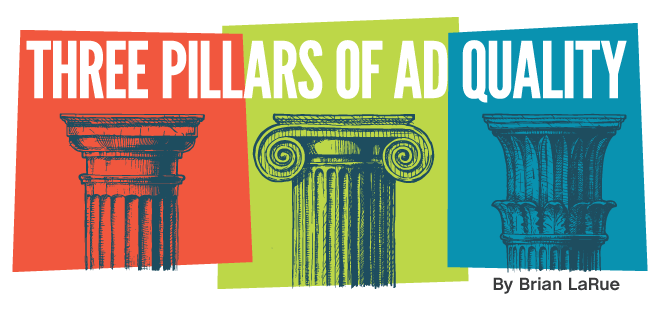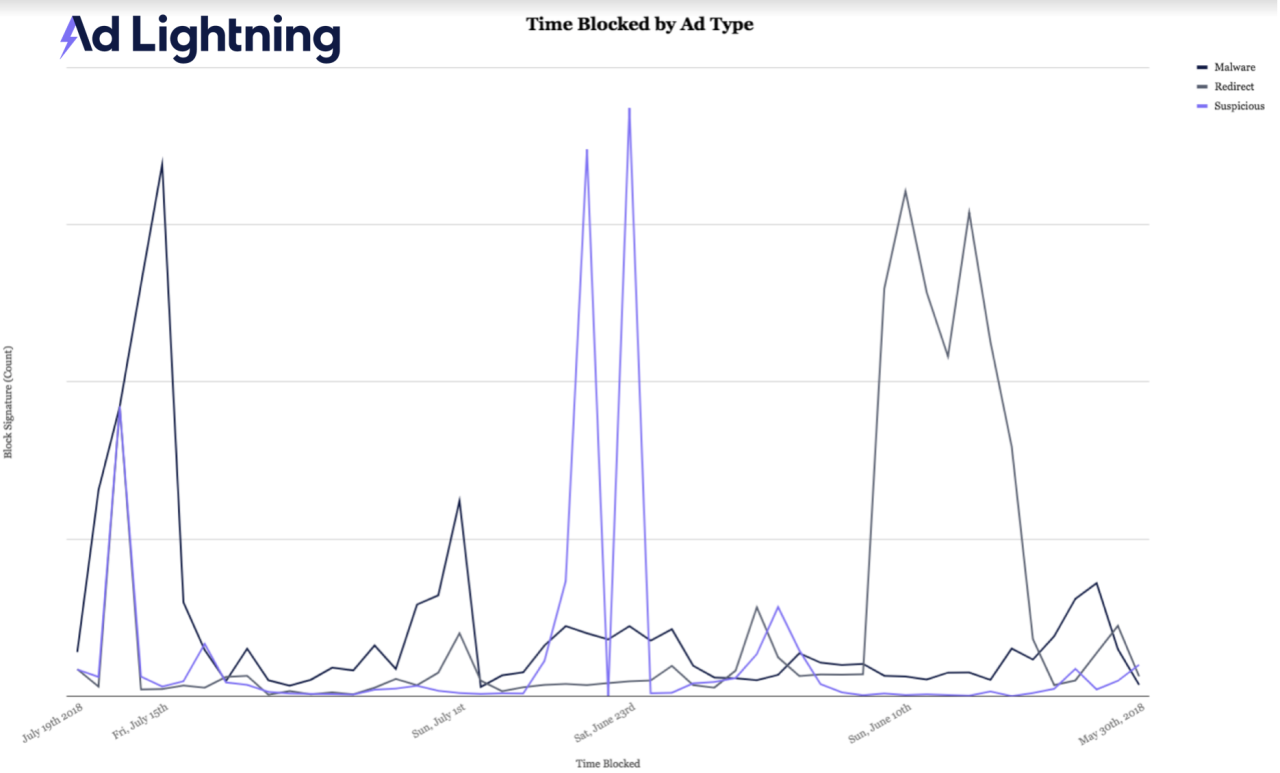
This is the third article in our Three Pillars of Ad Quality series, brought to you with the support of Ad Lightning. The first installment considered how publishers might approach ad quality beyond the current redirect crisis and the second examines action steps for compliance.
“Everybody’s working for the weekend,” Loverboy infamously claimed back in the ‘80s, but that’s not something publisher ops people know much about. Even on weekends, ad ops folks have to be on point because that’s when the troublesome creative tends to strike.
In analyzing creative-blocking data, Ad Lightning regularly sees huge spikes in undesirable creative (redirects and other malvertising) over weekends—from Friday night to even Sunday morning. The goal is obviously trying to strike when the ad gatekeepers are looking the other way.
In effect, there’s no down time when it comes to site security—which makes locking in a super reliable partner for creative quality assurance all the more imperative. Ops professionals may never be able to completely let their guards down, but the right QA provider can help lower their blood pressure.
But finding this perfect partner is a task in itself, and you need to be sure of… Well, what you need, and then what you should be asking about. After chatting with a diverse group of publisher ad ops folks, we’ve assembled these criteria to help you get your QA priorities in order.
Real-Time Blocking
While it may have seemed a novelty feature or something nice to have just a year ago, AdMonsters’ publisher base is in agreement that proactively blocking bad creative in real time is table stakes now for QA providers. With programmatic channels driving more and more revenue for publishers, a provider must offer real-time blocking to be taken seriously as a QA partner.
But just having blocking as a feature isn’t enough—publishers need a great deal of control over what gets blocked as well as an understanding of why, when, and where. Detailed reporting on types of formats and channels affected should be included alongside the blocking.
Sometimes good creative gets caught up in the net, which could be revenue drain. Regular notifications or alerts can help you determine both when you’re under siege and when you’re possibly turning down safe creative. A good partner will offer a great deal of flexibility and customization here.
And because this industry is a wealth of irony, you need to determine if preventing redirects and malvertising from hitting the site actually effects page load time. Other publishers reported having search-engine optimization hiccoughs because of real-time blocking.
Finally, it’s great your provider saved your skin by slapping down that malware, but it would even better if you can still monetize that impression. Check if vendors offer the ability to re-auction impressions after creative is blocked.
Live Support
For better or worse, we haven’t reached the age where this kind of tech really manages itself. Particularly with real-time blocking in effect, the speed of response from support can figure into your revenue efforts. It’s also an advantage connect with actual engineering resources in addition to account managers and sales staff.
Because this industry is a wealth of irony, you need to determine if preventing redirects and malvertising from hitting the site actually effects page load time.
But support is not just about trouble-shooting—a great partner will also offer helpful recommendations wherever possible. It’s terrific to have all that reporting on affected channels and formats, but in making sense of it, a voice with experience goes a long way. Your provider’s willingness also shows that company understands your specific business and is extra-invested in your success.
Cost-Effective Service
User experience should always take a front seat to revenue ambitions, but anyone who has spent time in this industry knows the latter has bad tendency to grab the wheel. The value of user experience isn’t easily calculable—the scale of good or bad UX is subjective to say the least. No surprise then that determining a reasonable price for high-grade creative QA is a challenge.
Demonstrating the revenue effects of a redirect epidemic or even a malware breach is difficult. One idea is examine is to examine page-views per session under normal circumstances versus during a malvertising attack. Likely they will be lower, as will the effective CPM per user for that period.
You can also test this with a creative QA wrapper on and off. The “cost of doing nothing” is intangible, but these kind of tests could give you a better idea what you stand to lose without a solid creative QA provider.
In addition, figure out what makes the most sense for you: being charged on an impression basis or by page view. You’ll find different models out there.
Tech Specs
Who watches the watchmen—or what are the specs of the spec-validators? Especially if you have a very complex ad tech stack or programmatic setup, you need to be able to evaluate how the creative QA software will interact with other happenings in your stack.
The ease of integration should be clear early on in the evaluation process—listen closely to the opinions of your developers (hopefully your ops team has a dev person onboard or a tight liaison). Each provider will always have a fair deal of “secret sauce” they’re unwilling to share, but they should be able to provide you a level of transparency about integration effects.
Comprehensive Solution?
“I don’t need one contract for ad quality and another for blocking redirects,” one publisher said. Many ops professionals are looking for an all-in-one package that both blocks bad creative in real time and can be used as creative QA tool. At the same time, some publishers are willing to take on multiple providers to ensure they have best-in-breed technology in all spots.
Who watches the watchmen—or what are the specs of the spec-validators?
Peer Experience
No two tech stacks are alike, but the experience of your ad ops peers should carry a lot of weight in your decision. Ask for nitty-gritty details as those can help you determine more vendor-specific questions. (And of course a great spot to gather with your ad ops peers is the Publisher Forum…)
Innovation and Roadmap
Are these guys truly innovating or are they just catching up? It’s said that fraudsters are always a step ahead—you want a partner that’s aware of what’s on the horizon and is actively preparing for future malvertising invasions.
This can also include working with the digital media and advertising community at large to educate and develop or further the propagation of tools and practices that will benefit the industry (e.g., HTML sandboxing, bot network detection).
This article is the third part of a series about ad quality. Enjoy parts one and two.
